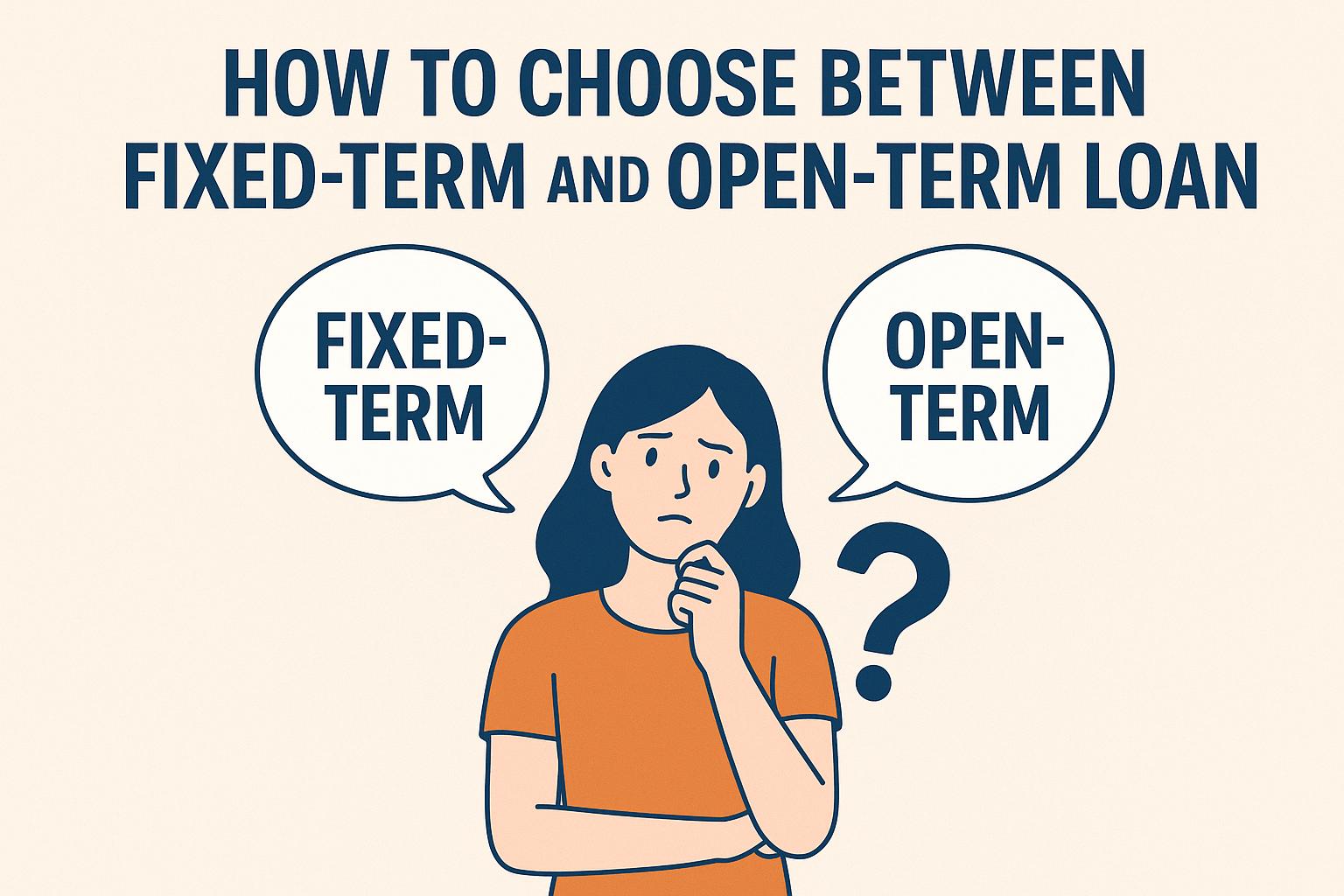
How to choose between a fixed-term and open-term loan.
Understanding Loan Types
When considering a loan, it’s essential to comprehend the distinctions between a fixed-term loan and an open-term loan. These loan types exhibit specific characteristics, catering to varied financial requirements and scenarios. By understanding these nuances, you can make an informed decision that aligns with your financial objectives and obligations. This article aims to elucidate these options.
Fixed-Term Loans
Fixed-term loans, also referred to as term loans, are loans with a defined duration and repayment schedule. These are typically sought after for financing large purchases or significant projects, owing to their structured nature.
Characteristics of Fixed-Term Loans
Defined Repayment Schedule: One of the most prominent features of fixed-term loans is their predictable repayment plan. When you take out a fixed-term loan, you are provided with a schedule that outlines the precise amounts and due dates for each payment. This clarity allows borrowers to integrate these payments smoothly into their monthly budget without worrying about unexpected increases.
Interest Rate Stability: Another advantage of fixed-term loans is the stability they offer in terms of interest rates. Typically, fixed-term loans come with a set interest rate that remains constant throughout the life of the loan. This feature provides significant security as it shields borrowers from the potential volatility of market interest rate changes, thereby ensuring that each payment will remain consistent.
Common Uses: Fixed-term loans are widely used in various financial scenarios, such as auto loans, mortgages, and personal loans. They are particularly suitable for individuals who value consistency in their repayment plan and prefer the peace of mind that comes with knowing their financial obligations are fixed.
Open-Term Loans
In contrast to fixed-term loans, open-term loans, often known as revolving credit, offer greater flexibility regarding repayment and borrowing capacities. These loans are particularly suited for those with ongoing and evolving financial needs, providing adaptability that more seamless financial management requires.
Features of Open-Term Loans
Flexible Repayment: Open-term loans distinguish themselves by offering borrowers the flexibility to vary their repayment amounts based on their current financial standing. Unlike fixed-term loans, where the repayment amounts are predetermined, open-term loans allow borrowers to adjust their payments, thereby providing the ability to manage cash flow more efficiently during times of financial stress.
Borrowing Flexibility: Another significant feature of open-term loans is the flexibility surrounding borrowing limits. Borrowers have the ability to draw additional funds up to a predetermined credit limit, offering a continual line of credit that can be accessed as required. This makes open-term loans ideal for those who may need to dip into borrowed funds periodically for various expenses.
Variety of Uses: These loans have versatile uses and are commonly associated with credit cards and lines of credit. They offer a revolving borrowing option, granting borrowers the liberty to access funds multiple times without needing to re-apply once the credit is replenished.
Factors to Consider
Deciding between these loan types necessitates a thoughtful evaluation of several elements:
Your Financial Goals
It is imperative to establish what you intend to achieve with the loan. Are you looking to finance a specific purchase like a car or home, or do you require ongoing access to credit for managing different expenses? Understanding your primary goal can significantly dictate which loan type is more aligned with your needs.
Interest Rates
Interest rates are pivotal and can greatly affect your loan’s cost over its duration. Fixed-term loans provide a stable interest rate, ensuring predictability. Open-term loans, however, may come with variable rates which could either be advantageous or risky, depending on market conditions. Consider your level of comfort with these scenarios while opting for a loan.
Repayment Capacity
Assessing your ability to meet repayment obligations is critical. With fixed-term loans, you’ll need to commit to fixed monthly payments. Open-term loans, however, allow you the flexibility to alter your payment amounts when necessary. This factor can be greatly influenced by your current and foreseeable financial condition and your tolerance for uncertainty.
Borrowing Needs
If your borrowing requirements are likely to be one-time, such as for a specific purchase, a fixed-term loan might be your best option. However, if your financial needs are expected to continue and evolve, an open-term loan with its revolving credit feature might serve you better. Understanding the nature and frequency of your borrowing will guide you in selecting the right loan type.
Conclusion
These insights intend to provide you with a comprehensive understanding of fixed-term and open-term loans and the essential aspects to consider when choosing between them. For a deeper exploration of loan options and comprehensive financial planning, consider visiting financial institutions or consulting with trusted financial advisors. This process can be instrumental in ensuring that the loan you choose aligns well with your long-term financial strategy and present financial situation.
